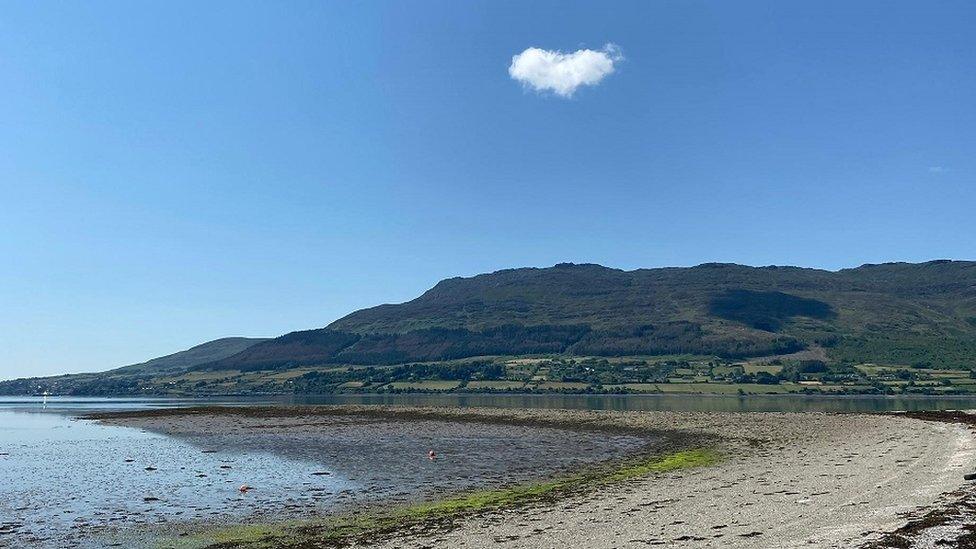The science behind the stunning autumn colours
- Published
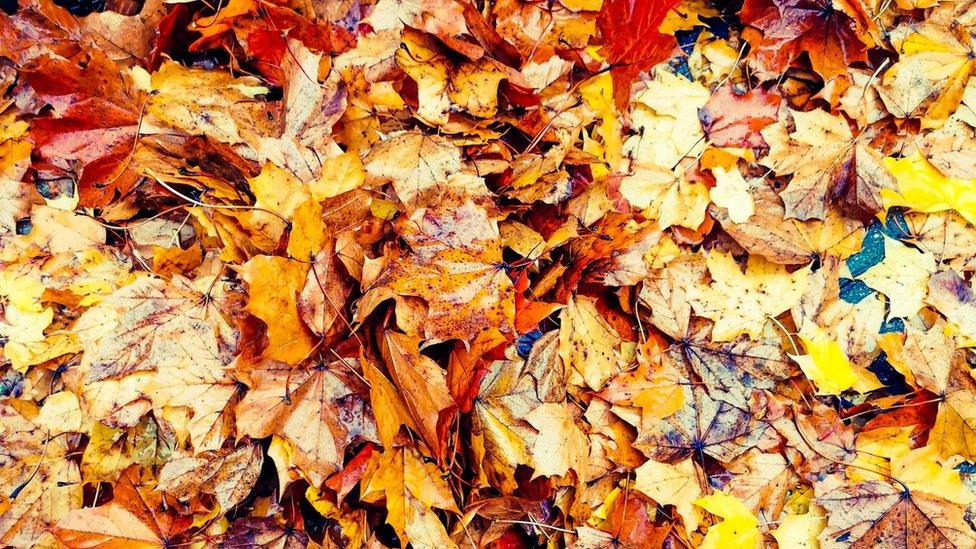
"Bittersweet October. The mellow, messy, leaf-kicking perfect pause between the opposing miseries of summer and winter."
I love this description from the author Carol Bishop Hipps.
Meteorological autumn consists of September, October and November. It is my favourite season, maybe because I'm an autumn baby.
One of the most stunning signs of autumn is the turning of the leaves.
The most vibrant displays of autumn leaves are evident when a dry summer is followed by an autumn with dry, sunny days and cool but not frosty nights.
Sunshine increases the amount of anthocyanin in the leaf, which is responsible for the russet red colours.
That is why the colour will vary from sunnier climes to duller climes.
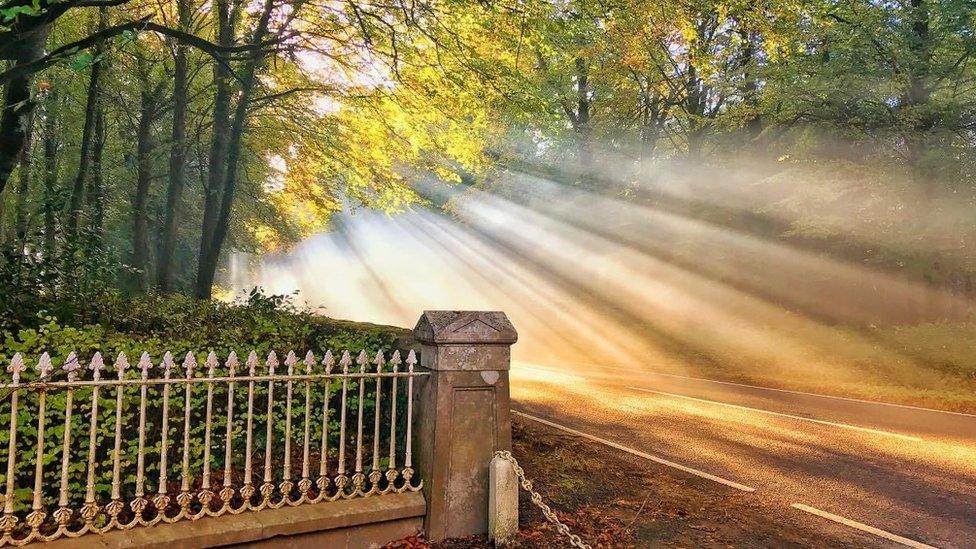
As sunlight filters through the autumn leaves it creates beautiful scenes like this at Ely Lodge Forest near Enniskillen in County Fermanagh
So far this autumn has been mild and relatively dry.
We had a record-breaking summer with a new all-time high temperature recorded in July, while September was the joint warmest September on record for Northern Ireland, according to the Met Office.
The first half of October continues the warm spell - Armagh recorded 20.3C on 7 October, while the long-term average is between 13C and 14C.
Sunshine though is key to the display of colour and while September was warm it was also exceptionally dull, the third dullest on record.
So how does the warm but rather dull weather this year affect the autumn colour?
According to Maurice Parkinson from Ballyrobert Gardens, a regular contributor on BBC Radio Ulster's Gardeners' Corner, this year's autumn colour will not be the best as it's been quite dull but it's not too late to perk up.
The warm weather will have the effect of delaying autumn, particularly the lack of frosts, but also creating a shorter window for any good displays that may emerge.
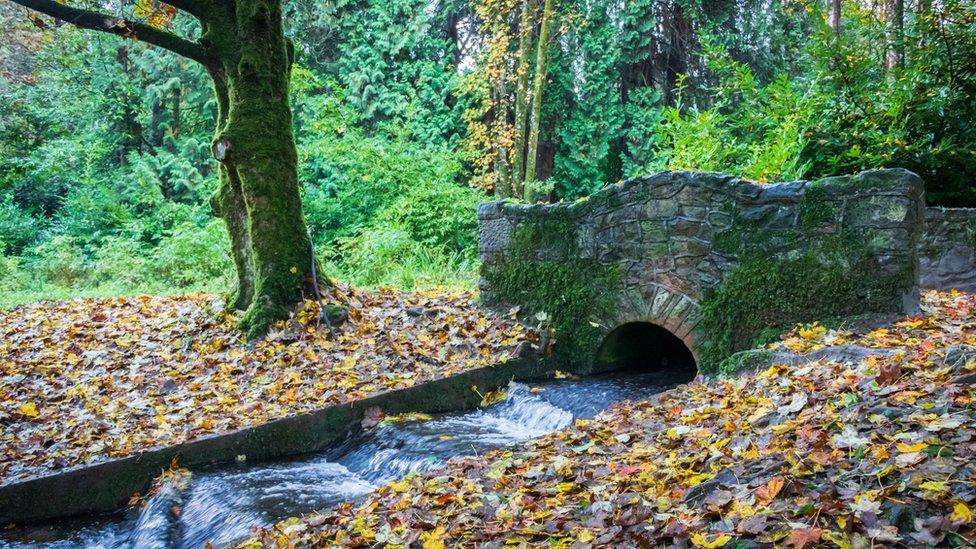
Walkers in Drum Manor Forest Park near Cookstown in County Tyrone can enjoy this autumnal scene
Oli Johnson, assistant head gardener at Mount Stewart near Newtownards in County Down, says: "The drought-like conditions we experienced in spring and early summer had an effect on some plants.
"Trees exist on different timescales to humans, they can live for hundreds of years, so it takes them longer to register what has happened around them.
"The maples seem to have begun a few weeks early and the beech trees are out of kilter with each other... while the birches are just thinking of showing off their bright yellows."
Why do trees change their colour in the first place?
This is an opportunity to remember your school science and chemistry lessons.
As temperatures fall and days shorten there is less sunshine available.
The chemical in leaves that makes them green is called chlorophyll.
That starts to break down while other chemicals become dominant, which are carotene (as in carrots) and anthocyanin.
Those give the leaves their yellow, red, brown and orange colours.
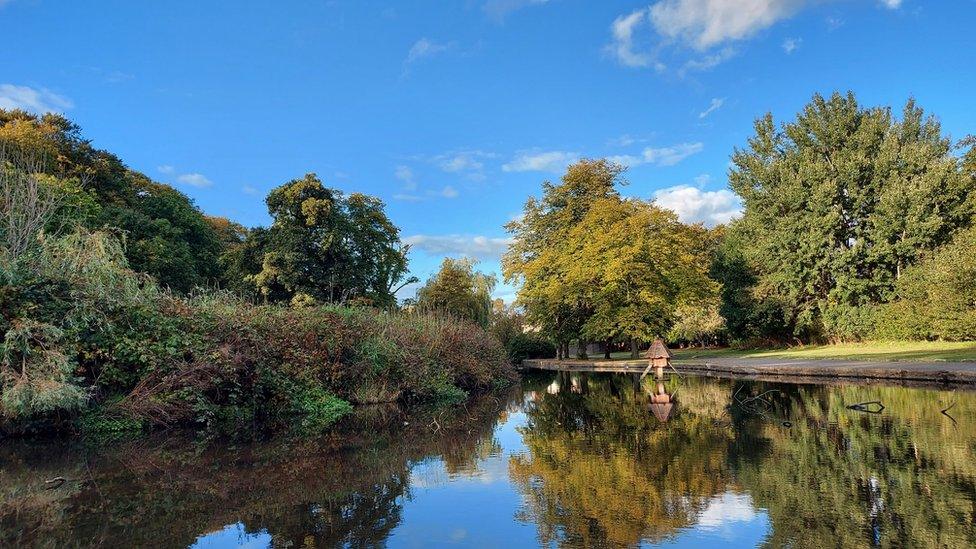
The colours continue to change in Ward Park in Bangor, County Down
The shorter days are a sign to trees to prepare for winter.
Less daylight means there isn't enough light for photosynthesis to occur so the trees begin to close down their food production system and reduce the amount of chlorophyll in their leaves.
Basically, the trees are protecting themselves by preserving energy, just as we would huddle into our coats when it turns colder.
Displays in Northern Ireland tend to be more toned down compared to the south of England, for example, or the sunnier counties of Wexford and Wicklow.
They can still be beautiful, including Crom Castle in County Fermanagh, Antrim Castle Gardens, the Minnowburn in the Lagan Valley and Glenarm in County Antrim to name a few.
So get out and enjoy before the first of the storms come along and strip the remaining leaves.
- Published17 July 2021
